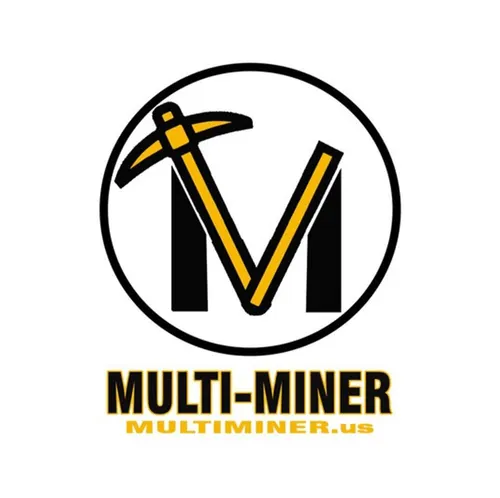Our partner, XM, lets you access a free demo account to apply your knowledge.
No hidden costs, no tricks.

Bitcoin is hailed as the father of cryptocurrencies. It is the largest crypto by market cap and has the best reputation. Because of this, mining Bitcoin has become a really popular activity.
Bitcoin mining is when, using different hardware and software setups, people verify transactions on the blockchain and receive rewards for doing so.
When deciding to start Bitcoin mining, choosing hardware might not be that hard, but choosing which software to use is a complicated process. This software runs everything. They organize mining pools and overlay all kinds of statistics that are relevant. Additionally, they can determine the power usage of miners. Let’s explore this topic more through this guide.

Bitcoin mining is a process by which users are validating transactions made using Bitcoin and as a reward, they receive a small amount of Bitcoin.
Bitcoin works on blockchain technology, which is a complicated system consisting of many blocks which are connected to create this complicated chain.
Approximately every 10 minutes, a new block is created when people are transferring Bitcoins. Miners then try to race each other to be the first to find this new block. When the miner finds a new block and validates the transactions, it receives 6.25 BTC as a reward. This number will become 3.123 BTC when the next Bitcoin halving takes place.
When we decide to start mining Bitcoin, the first thing we need to acquire is the hardware needed to mine Bitcoin. So when we have the hardware, the next step is choosing the best Bitcoin mining software.
There is no universally accepted best mining software and choice comes down to personal preference and needs.
In this guide, we will take you through the best software available on the market and what makes them a good choice.

CGMiner is the mining software of choice of many, as it is an open-source program with cross-platform and cross-hardware compatibility and has good and direct controls.
CGMiner gives us remote control ability. It uses a command-line interface that allows us to control different components of the miner remotely, such as fan speed and other configurable tasks. It also has advanced detection of new blocks and allows us to control the number of power miners used.
This software was originally created for Linux, but it is also compatible with Windows and Mac operating systems. It is very safe to use, as it is open-source software that is written using the C programming language, which makes it easy to verify the code.
We also have the ability to use CGMiner with different hardware setups including, GPUs, CPUs, ASICs, and others.
When it comes to complexity, this is not an easy software to use as it lacks visuals and is command-line driven, which makes it difficult for newcomers to get started. It must be mentioned that it is an excellent choice for those who have some expertise.
| Pros | Cons |
|---|---|
| Works on multiple operating systems | Not the best choice for newcomers |
| Is open-source | Has some problems with Windows 10 |
| Cross-hardware compatible |

When it comes to easy-to-use miners, MultiMiner is one of the best miners available. It was created in 2013 with ease of use in mind. It has a beginner-friendly interface and is easy to set up.
MultiMiner helps users to set up their mining rigs really easily. It tells you exactly what we need to do, and scans our hardware to optimize itself with the miner. It also helps us to connect to the pool which might be hard for inexperienced miners.
Remote access is also one of the functions MultiMiner offers its users. It allows users to choose what strategy they want to use while mining and does not require much human interference as it runs automatically.
It supports multiple operating systems, but if we want to use Mac and Linux systems, we will need additional software as MultiMiner was created with Windows in mind. But setting up this additional software is not hard, and it takes us through the whole process, so we should not run into any big problems.
This miner is a great choice for both newcomers and experienced miners.
| Pros | Cons |
|---|---|
| Beginner-friendly | Requires additional software for Mac and Linux |
| Automated mining function | Limited functions and customization for experienced miners. |
| Works on multiple operating systems |

EasyMiner is a free, open-source miner with customization and security in mind. Because it is open-source, experienced miners have the ability to alter and customize the code to suit their needs.
EasyMiner has one disadvantage compared to some other famous mining software programs. It does not support Mac operating systems and is only optimized for Windows and Linux users.
Security is one of EasyMiner's most prioritized features. It implements sophisticated, military-grade security protocols with round Rubin SSD servers. This guarantees that no one will be able to gain access to your account and steal your Bitcoins.
Its log viewer is another great function. We are given real-time analytics of every aspect of the miner we would need, such as hash rates, earnings, hourly accepted and failed shares, and many more.
| Pros | Cons |
|---|---|
| High security | Does not support macOS |
| Open-source code | Is considered malicious by antivirus programs |
| Great analytical tools |

ECOS is a cloud-based mining software. What this means is that we don’t need to actually buy any mining hardware. You are paying for a mining contract and kind of borrowing mining equipment from ECOS.
When setting up ECOS, you will need to predict what the Bitcoin price will be, how long you will be using the software, and how much hash power you want to use. Then you will be shown an estimate of your earnings. But it is not guaranteed, and it depends on how much Bitcoin will actuallyto be worth. If your prediction was somewhat close to the actual price, then your earnings will be close to the estimate of ECOS.
But with this comfort comes one disadvantage, which is price. It is cheaper and more profitable to buy your own hardware than to use the ECOS cloud mining function. But for some this comfort outweighs the margin of profits.
| Pros | Cons |
|---|---|
| Does not require hardware | Less profitable than actually owning the hardware |
| Easy to set up | Might run into some problems as it is cloud-based, and you don’t have complete control |

Awesome Miner is the miner of choice for those who have big mining rigs at different locations. It is a great software to manage multiple mining rigs from one dashboard.
This software has the ability to support different types of hardware at the same time and can operate more than 50 mining engines and many different mining protocols. Managing mining pools can be a headache, but not with Awesome Miner as it lets its users manage different mining pools with just one click.
It also provides system settings and statistics that need keeping track of.
When it comes to customization, Awesome Miner gives its users the ability to customize many different things with built-in C# scripting available, but you will need good expertise to make it work.
| Pros | Cons |
| More than 50 mining engines supported | Does not support macOS |
| Can access from any device | Not beginner-friendly |

Our partner, XM, lets you access a free demo account to apply your knowledge.
No hidden costs, no tricks.
If hardware is a muscle, mining software is a brain. Mining software completes complex tasks of connecting miners to pools or gives you the ability to mine Bitcoin directly.
Bitcoins are mined by finding new blocks on the blockchain, which happens approximately every 10 minutes. But solo miners are a rarity nowadays. Because of this, people usually mine in pools and the exact time it takes to mine one Bitcoin can vary.
It depends on the hardware you use and how big of a pool you are part of. The more powerful the mining setup has, the more money you make. Another aspect is the price of Bitcoin, the lower the price the less you will be making.